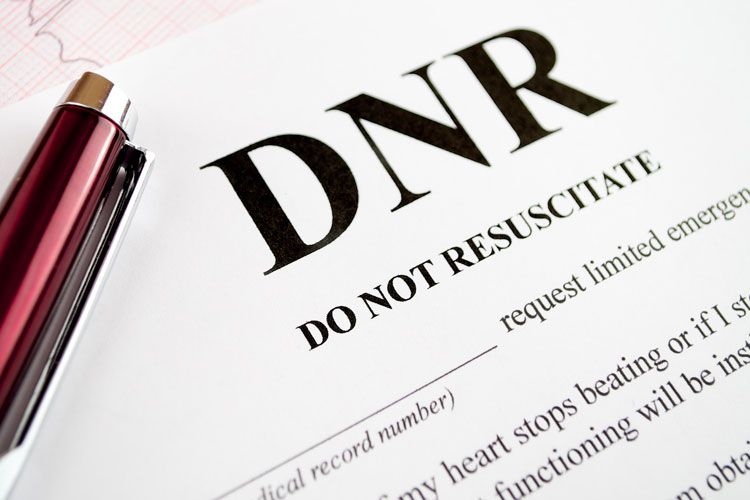Task: Learn About Two Medical Directives For Advance Illnesses: DNR & POLST
It’s time to tackle a heavy subject that’s never easy to face, especially if it involves a person you love: Creating medical directives for when the end is close.

There’s a point in many people’s lives when a body simply becomes uncooperative and treatment methods in hopes of a recovery become extremely limited. To prepare for these eventualities a POLST and DNR can help provide the softest landing possible.
The reason we’re combining both of these into one task isn’t for you to race out and get them, but for you to understand what they are. Also, for them to be legally valid they need to be filled out and signed by a doctor or medical professional.
Do Not Resuscitate Order (DNR)
You fill out a DNR with your doctor when you don’t want cardiopulmonary resuscitation (CPR) or advanced cardiac life support (ACLS) if your heart or breathing stops.
If you have a DNR in place doctors, emergency medical service responders, and other health professionals are legally obligated to respect your medical decisions and may not attempt CPR, ACLS, or other life-saving techniques. This is primarily for people with terminal illnesses or serious medical ailments where there’s no chance of recovery and CPR might do more harm than good.
A DNR must be completed with a doctor or another medical professional, who’ll provide you with your state’s forms and countersign it with you.
Where should you keep it?
You want this form with you when you’re receiving medical treatments and displayed prominently in your home so emergency medical responders know not to attempt resuscitation. You'll also want to give a copy to your Health Care Proxy, doctor, and any medical specialists or health professionals providing you care. Just keep this phrase in mind: Don’t Go Far Without Your DNR.
As we said, a DNR only deals with situations that require CPR or similar lifesaving measures. When you want something more specific you’ll need a different document.
Physicians Orders for Life Sustaining Treatment (POLST)
A POLST form is a legal document for people with an advanced progressive or terminal illness and specifies the type of care they’d like in an emergency medical situation. It’s basically a more detailed and specific DNR, which can conform to the needs of the medical condition you’re managing.
In an emergency situation, any procedures that are legally required of emergency personnel will be overridden by the personal decisions indicated on the POLST. You can also include a Do Not Hospitalize (DHN) component if you still want treatment but don’t want it to happen in a hospital. A POLST is typically for people with less than six months to live, but can also be made available for people with progressive conditions.
Unlike a DNR or Advance Directive this document has many different names depending on where you live, even though they’re all conceptually the same. Here are some of them:
It can be quite confusing, and looks like alphabet soup, so only concern yourself with the one in your state if it’s available. Like a DNR, it must be filled out with a medical professional (doctor, nurse, hospice worker) and signed by a medical professional as well. Once signed, all medical providers must honor the instructions no matter where you are, whether it’s at a hospital, care facility, or your own home.
Where should you keep it?
Just like your DNR and Advance Directive, the people responsible for your care need to know it exists for it to be honored. As a bonus, POLST forms are often printed on brightly colored paper so that they’re easy to see and find.
The Task
We know this is heavy stuff, but these directives can greatly help every medical professional properly manage your care. The more information they have about a patient the better they can treat them and others who are in dire medical need. You may not need to ever have to complete either of these documents, but knowing they exist, what they provide, and how to get them can be helpful for yourself or any ailing family members in the future.
<< Previous Task | Next Task >>
- Task: Get Your Passwords OrganizedThe typical person has an average of over 130 different online accounts,...Read more
- Digital Cheat Sheet: How To Create A Digital...What happens to your digital property after you die? Great question! Here's...Read more
- Task: Grant Access To Your DevicesIn case of an emergency, how could someone you trust access your phone?Read more
- Task: Clean Up Your Phone ContactsWe’re all familiar with naming an emergency contact if something happens,...Read more



